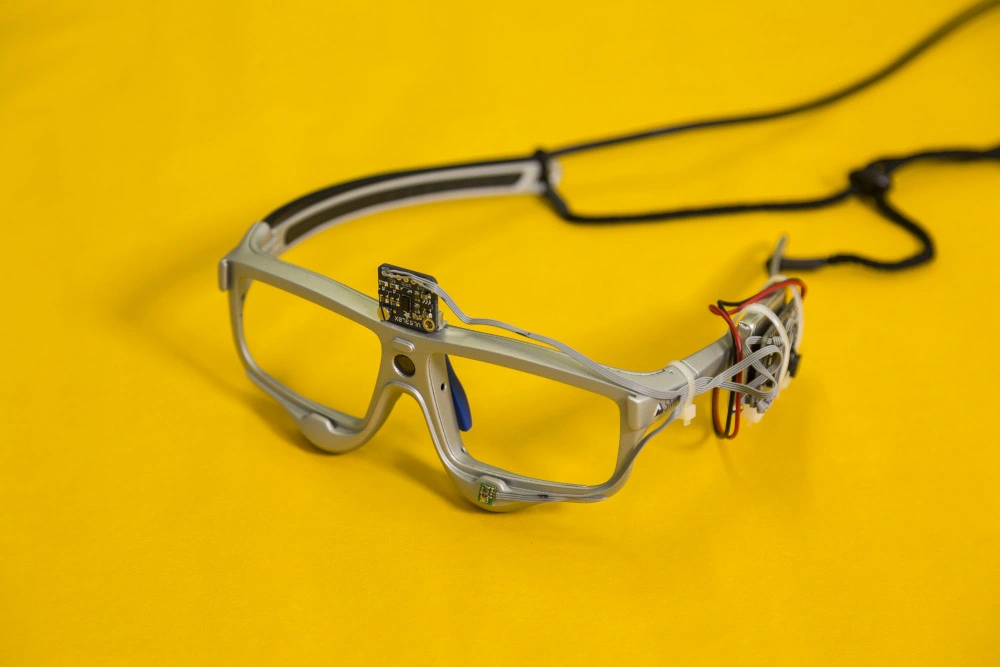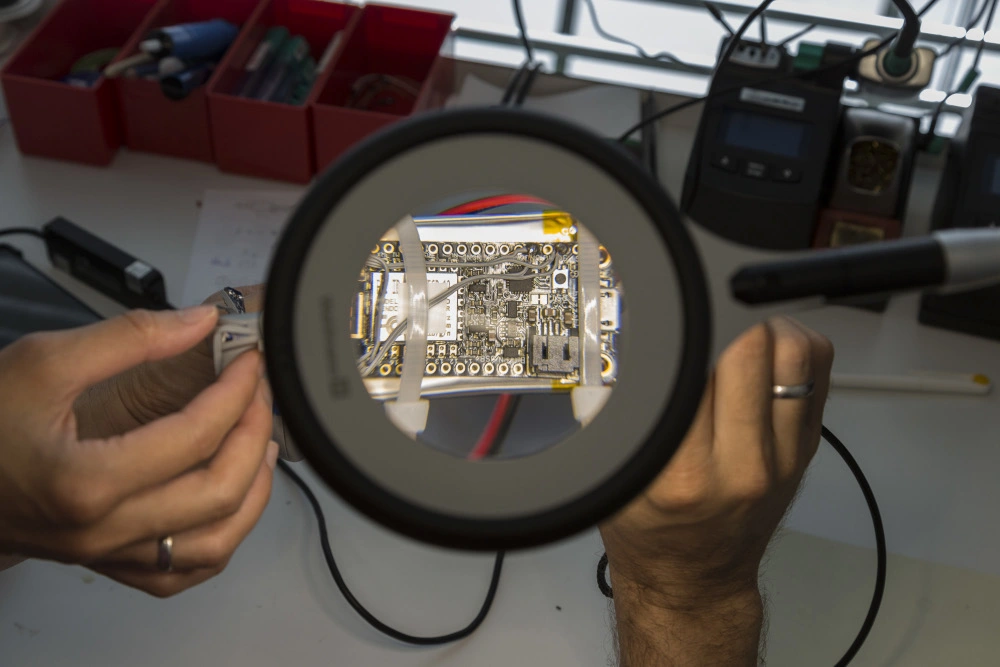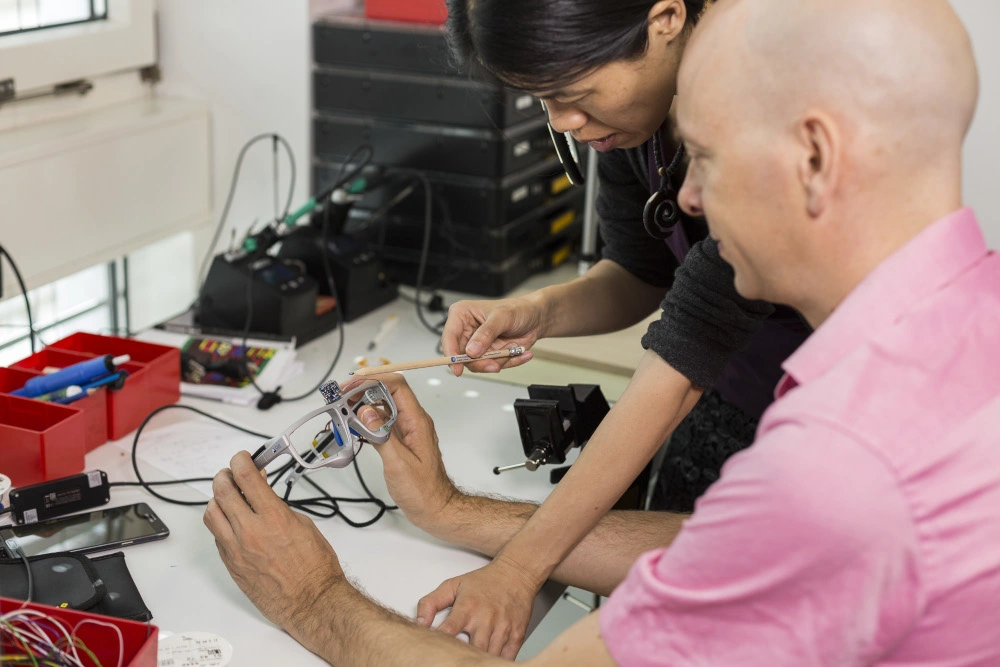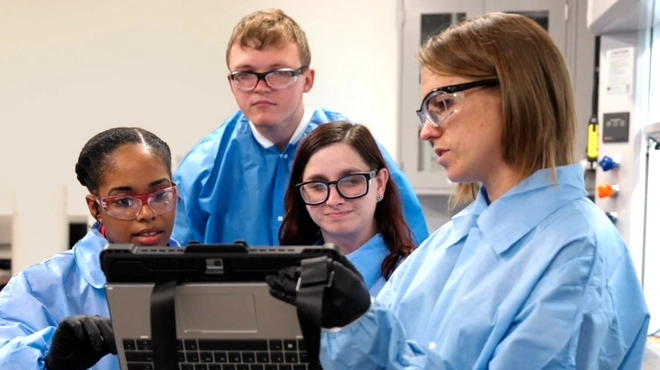Vanessa Leung and Roman Schmied like to go on long hikes. The married physicists, who work at the University of Basel in Switzerland, use this time to talk and relax.
While hiking about two years ago, they discussed the rapid rise in shortsightedness - or myopia - which is feared will affect every third person on the planet by 2020. Suffering from myopia themselves, they wondered if it’s possible to explain what causes this eye condition and find new ways to help rein in the growing myopia crisis.
A global problem
Alarm bells sounded a few years earlier in 2015, when an article in Nature reported that the “myopia boom” seemed to affect an increasing number of young people, especially in Southeast Asia.
While only some 10-20% of Chinese suffered from myopia after World War II, new research suggested that up to 90% of young adults in China today are shortsighted. In neighboring South Korea, studies showed that more than 96% of 19-year-olds are affected.
Outside Asia, the situation is equally dire. According to the United States National Eye Institute, the prevalence of myopia has risen to nearly 50% over the past 40 years. A similar situation is developing in Europe.
Looking for causes
The reasons for this phenomenon are far from clear. While researchers had long believed that myopia was a genetic condition, later findings suggested that eye fatigue triggered by long periods of reading, for example, may cause the eye to lose its focusing power and rob people of the ability to clearly see things that are at a distance.
But even this popularly held view has been turned upside down in recent years. Around the turn of the millennium, ophthalmologists started to notice that myopia could be triggered by how much time people spend outside. In two recent separate studies, researchers in the United States and Australia found that children who spent less time outdoors were at greater risk of developing myopia because their exposure to light was lower.
“There is a growing body of literature centering on the rise in myopia,” Leung says. “But many of these studies are struggling to pinpoint a root cause for myopia. There is also a lack of data that correlate the different potential causes.”
Among the questions that Leung and Schmied initially asked themselves: How many factors cause the eye to lose its ability to focus? How could these causes be established? How could data help mend this situation, and how could this data be gathered?

Around the same time, they learned about FreeNovation, a research platform established by Novartis in 2016. Funded through the Novartis Research Foundation during a period of 18 months, the platform is providing young researchers in Switzerland with the opportunity to pursue out-of-the-box ideas no one else dared to follow.
Space for unorthodox ideas
Every year, CHF 16 billion is spent on research and development in Switzerland. However, the pressure to produce tangible results means that unorthodox ideas usually receive limited, if any, funding.
“Switzerland has a strong education and research network, particularly in the realm of biosciences,” says Hans Widmer, who runs the FreeNovation program for Novartis. “But there is a need to invest in grassroots projects which are highly original but may face difficulties getting funding because the chance of success is unknown.”
As Leung and Schmied soon realized, FreeNovation was an ideal way for researchers like themselves to pursue scientific ideas that are off the beaten path.
“We realized early on that we need quantitative data on how the eye responds to modern lighting and visual environments,” Leung says. “So we thought of a concept for smart glasses during our hike. Something that didn’t exist before.”
The sensor-equipped glasses that Leung and Schmied had in mind would be able to measure eye movements and sense the environment. The device would collect real-world data, which would then be processed by an intelligent software that would generate fresh insights into what could possibly trigger myopia, paving the way for new solutions as to how the boom could potentially be stopped.
Gathering data
After coming up with their idea, Leung and Schmied submitted a summary to the FreeNovation judging panel, and were ultimately selected to participate in the program. They received a research stipend and the opportunity to work on their project for 18 months.
“We didn’t expect to get this grant,” Schmied says. “But once we got the chance to work on it, we went full throttle.”
Working initially with an existing eye tracker that is normally used in marketing to measure the eye movements of customers reading magazines or looking at a shop window, the two created additional sensors that measure ambient light. In addition, they designed software to identify relationships between eye movements and the eye’s response to modern lighting and visual environments.

Not long after they started working on the project, Leung and Schmied had developed the first prototypes. These somewhat bulky yet high-tech glasses, which were able to collect data through special sensors, helped them to collaborate with ophthalmologist Peter Maloca from Moorfields Eye Hospital in London, and carry out tests with adult volunteers.
As part of the ensuing pilot study, 15 clear-sighted and shortsighted people used the glasses for about one hour while walking, reading and looking into the distance. The outcome was encouraging. “In general, we found that we could collect most measurements with an acceptable accuracy,” Leung says. “This included light intensity, pupil size and blinking rates.”
However, the two realized that the device was not able to collect accurate measurements of the distance at which the volunteers were looking. This prompted them to improve the glasses with a laser distance sensor, which now allows for distance measurements with much better accuracy.
Next steps
Leung and Schmied are planning to test the improved glasses in a trial with young children in Hong Kong. Part of the funding has already been secured, but the team is seeking additional financing to conduct the entire trial.

“We’ve come a long way thanks to FreeNovation, which has given us the opportunity to work in an important medical field that not only affects us personally but also millions of others,” Schmied says. “As a team, as a married couple with children, we have grown over time and now hope to take this to the next level.”
There is a growing body of literature centering on the rise in myopia. But many of these studies are struggling to pinpoint a root cause for myopia.
Vanessa Leung
 VIDEO
VIDEO
Two physicists from Basel are working to better understand #myopia.



